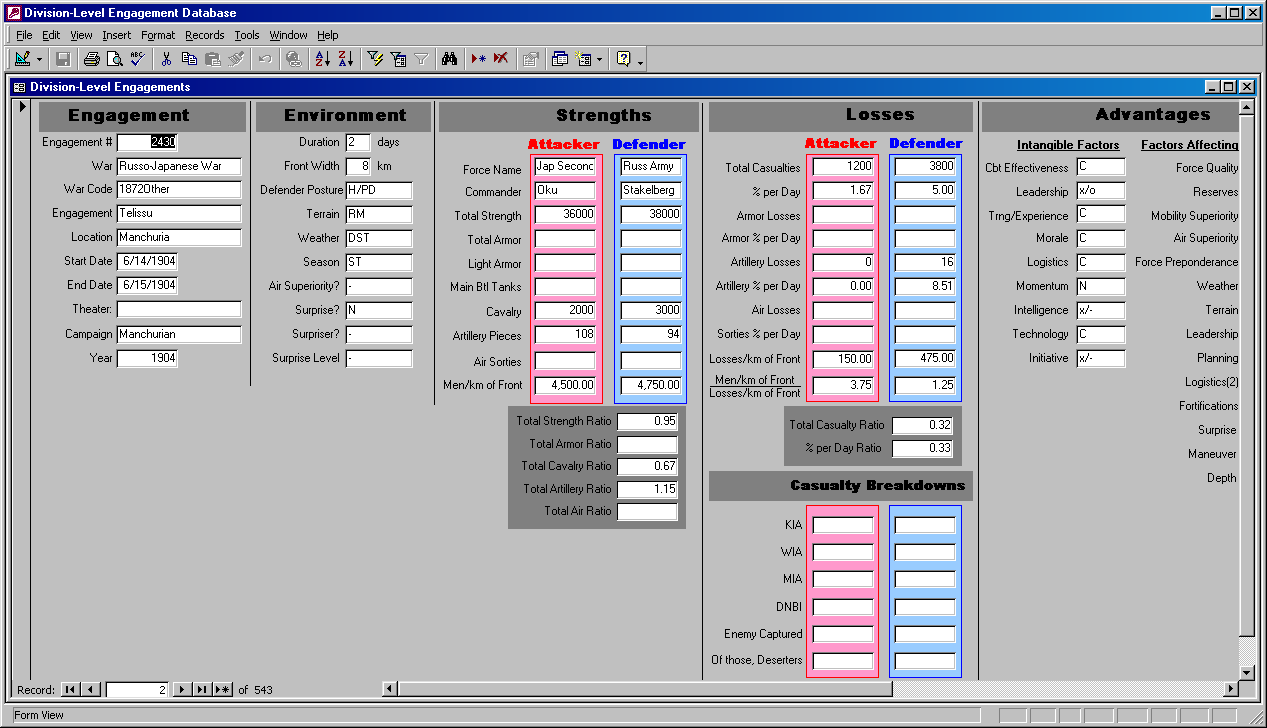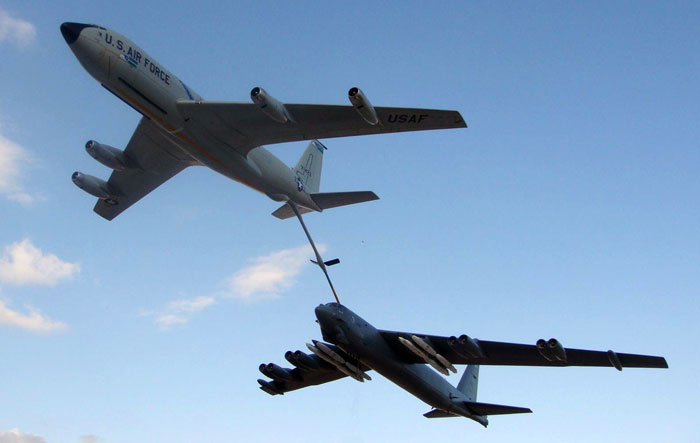
In a previous post, we looked at some aspects of the nuclear balance of power. In this Stpost, we will consider some aspects of conventional deterrence. Ironically, Chris Lawrence was cleaning out a box in his office (posted in this blog), which contained an important article for this debate, “The Case for More Effective, Less Expensive Weapons Systems: What ‘Quality Versus Quantity’ Issue?” by none other than Pierre M. Sprey, available here, published in 1982.
In comparing the F-15 and F-16, Sprey identifies four principal effectiveness characteristics that contribute to victory in air-to-air combat:
- Achieving surprise bounces and avoiding being surprised;
- Out-numbering the enemy in the air;
- Out-maneuvering the enemy to reach firing position (when surprise fails);
- Achieving reliable kills within the brief firing opportunities presented by combat.
“Surprise is the first because, in every air war since WWI, somewhere between 65% and 85% of all fighters shot down were unaware of their attacker.” Sprey mentions that the F-16 is superior to the F-15 due to the smaller size, and that fact that it smokes much less, both aspects that are clearly Within-Visual Range (WVR) combat considerations. Further, his discussion of Beyond Visual Range (BVR) combat is dismissive.
The F-15 has an apparently advantage inasmuch as it carries the Sparrow radar missile. On closer examination, this proves to be little or no advantage: in Vietnam, the Sparrow had a kill rate of .08 to .10, less that one third that of the AIM-9D/G — and the new models of the Sparrow do not appear to have corrected the major reasons for this disappointing performance; even worse, locking-on with the Sparrow destroys surprise because of the distinctive and powerful radar signature involved.
Sprey was right to criticize the performance of the early radar-guided missiles. From “Trends in Air-to-Air Combat: Implications for Future Air Superiority,” page 10
From 1965 through 1968, during Operation Rolling Thunder, AIM-7 Sparrow missiles succeeded in downing their targets only 8 percent of the time and AIM-9 Sidewinders only 15 percent of the time. Pre-conflict testing indicated expected success rates of 71 and 65 percent respectively. Despite these problems, AAMs offered advantages over guns and accounted for the vast majority of U.S. air-to-air victories throughout the war.
Sprey seemed to miss out of the fact that the radar guided missile that supported BVR air combat was not something in the far distant future, but an evolution of radar and missile technology. Even in the 1980’s, the share of air-to-air combat victories by BVR missiles was on the rise, and since the 1990’s, it has become the most common way to shoot down an enemy aircraft.
 In an Aviation Week podcast in July of this year, retired Marine Lt. Col. David Berke (also previously quoted in this blog), and Pierre Sprey debated the F-35. Therein, Sprey offers a formulaic definition of air power, as created by force and effectiveness, with force being a function of cost, reliability, and how often it can fly per day (sortie generation rate?). “To create air power, you have to put a bunch of airplanes in the sky over the enemy. You can’t do it with a tiny hand full, even if they are like unbelievably good. If you send six aircraft to China, they could care less what they are … F-22 deployments are now six aircraft.”
In an Aviation Week podcast in July of this year, retired Marine Lt. Col. David Berke (also previously quoted in this blog), and Pierre Sprey debated the F-35. Therein, Sprey offers a formulaic definition of air power, as created by force and effectiveness, with force being a function of cost, reliability, and how often it can fly per day (sortie generation rate?). “To create air power, you have to put a bunch of airplanes in the sky over the enemy. You can’t do it with a tiny hand full, even if they are like unbelievably good. If you send six aircraft to China, they could care less what they are … F-22 deployments are now six aircraft.”
Berke counters with the ideas that he expressed before in his initial conversation with Aviation week (as analyzed in this blog), that information and situational awareness are by far the most important factor in aerial warfare. This stems from the advantage of surprise, which was Sprey’s first criteria in 1982, and remains a critical factor is warfare to this day. This reminds me a bit of Disraeli’s truism of “lies, damn lies and statistics” — pick the metrics that tell your story, rather than objectively look at the data.
Critics beyond Mr. Sprey have said that high technology weapons like the F-22 and the F-35 are irrelevant for America’s wars; “the [F-22] was not relevant to the military’s operations in places like Iraq, Afghanistan and Libya — at least according to then-secretary of defense Robert Gates.” Indeed, according to the Washington Post, “Gates called the $65 billion fleet a ‘niche silver-bullet solution’ to a major aerial war threat that remains distant. … and has promised to urge President Obama to veto the military spending bill if the full Senate retains F-22 funding.”
The current conflict in Syria against ISIS, after the Russian deployment resulted in crowded and contested airspace, as evidenced by a NATO Turkish F-16 shoot down of a Russian Air Force Su-24 (wikipedia), and as reported on this blog. Indeed, ironically for Mr. Sprey’s analysis of the relative values of the AIM-9 vs the AIM-7 missiles, as again reported by this blog,
[T]he U.S. Navy F/A-18E Super Hornet locked onto a Su-22 Fitter at a range of 1.5 miles. It fired an AIM-9X heat-seeking Sidewinder missile at it. The Syrian pilot was able to send off flares to draw the missile away from the Su-22. The AIM-9X is not supposed to be so easily distracted. They had to shoot down the Su-22 with a radar guided AMRAAM missile.
For the record the AIM-7 was a direct technical predecessor of the AIM-120 AMRAAM. We can perhaps conclude that having more that one type of weapon is useful, especially as other air power nations are always trying to improve their counter measures, and this incident shows that they can do so effectively. Of course, more observations are necessary for statistical proof, but since air combat is so rare since the end of the Cold War, the opportunity to learn the lesson and improve the AIM-9X should not be squandered.
USAF Air Combat Dominance as Deterrent
Hence to fight and conquer in all your battles is not supreme excellence; supreme excellence consists in breaking the enemy’s resistance without fighting. – Sun Tzu
The admonition to win without fighting is indeed a timeless principle of warfare, and it is clearly illustrated through this report on the performance of the F-22 in the war against ISIS, over the crowded airspace in Syria, from Aviation Week on June 4th, 2017. I’ve quoted at length, and applied emphasis.
Shell, a U.S. Air Force lieutenant colonel and Raptor squadron commander who spoke on the condition that Aviation Week identify him only by his call sign, and his squadron of stealth F-22 Lockheed Martin Raptors had a critical job to do: de-conflict coalition operations over Syria with an irate Russia.
… one of the most critical missions the F-22 conducts in the skies over Syria, particularly in the weeks following the April 6 Tomahawk strike, is de-confliction between coalition and non-coalition aircraft, says Shell. … the stealth F-22’s ability to evade detection gives it a unique advantage in getting non-coalition players to cooperate, says Shell.
‘It is easier to bring air dominance to bear if you know where the other aircraft are that you are trying to influence, and they don’t know where you are,’ says Shell. ‘When other airplanes don’t know where you are, their sense of comfort goes down, so they have a tendency to comply more.‘
… U.S. and non-coalition aircraft were still communicating directly, over an internationally recognized, unsecure frequency often used for emergencies known as ‘Guard,’ says Shell. His F-22s acted as a kind of quarterback, using high-fidelity sensors to determine the positions of all the actors on the battlefield, directing non-coalition aircraft where to fly and asking them over the Guard frequency to move out of the way.
The Raptors were able to fly in contested areas, in range of surface-to-air missile systems and fighters, without the non-coalition players knowing their exact positions, Shell says. This allowed them to establish air superiority—giving coalition forces freedom of movement in the air and on the ground—and a credible deterrent.
Far from being a silver bullet solution for a distant aerial war, America’s stealth fighters are providing credible deterrence on the front lines today. They have achieved in some cases, the ultimate goal of winning without fighting, by exploiting the advantage of surprise. The right question might be, how many are required for this mission, given the enormous costs of fifth generation fighters? (more on this later). As a quarterback, the F-22 can support many allied units, as part of a larger team.
Giving credit where it is due, Mr. Sprey has rightly stated in his Aviation Week interview, “cost is part of the force you can bring to bear upon the enemy.” His mechanism to compute air power in 2017, however, seems to ignore the most important aspect of air power since it first emerged in World War I, surprise. His dogmatic focus on the lightweight, single purpose air-to-air fighter, which seems to shun even available, proven technology seems clear.




